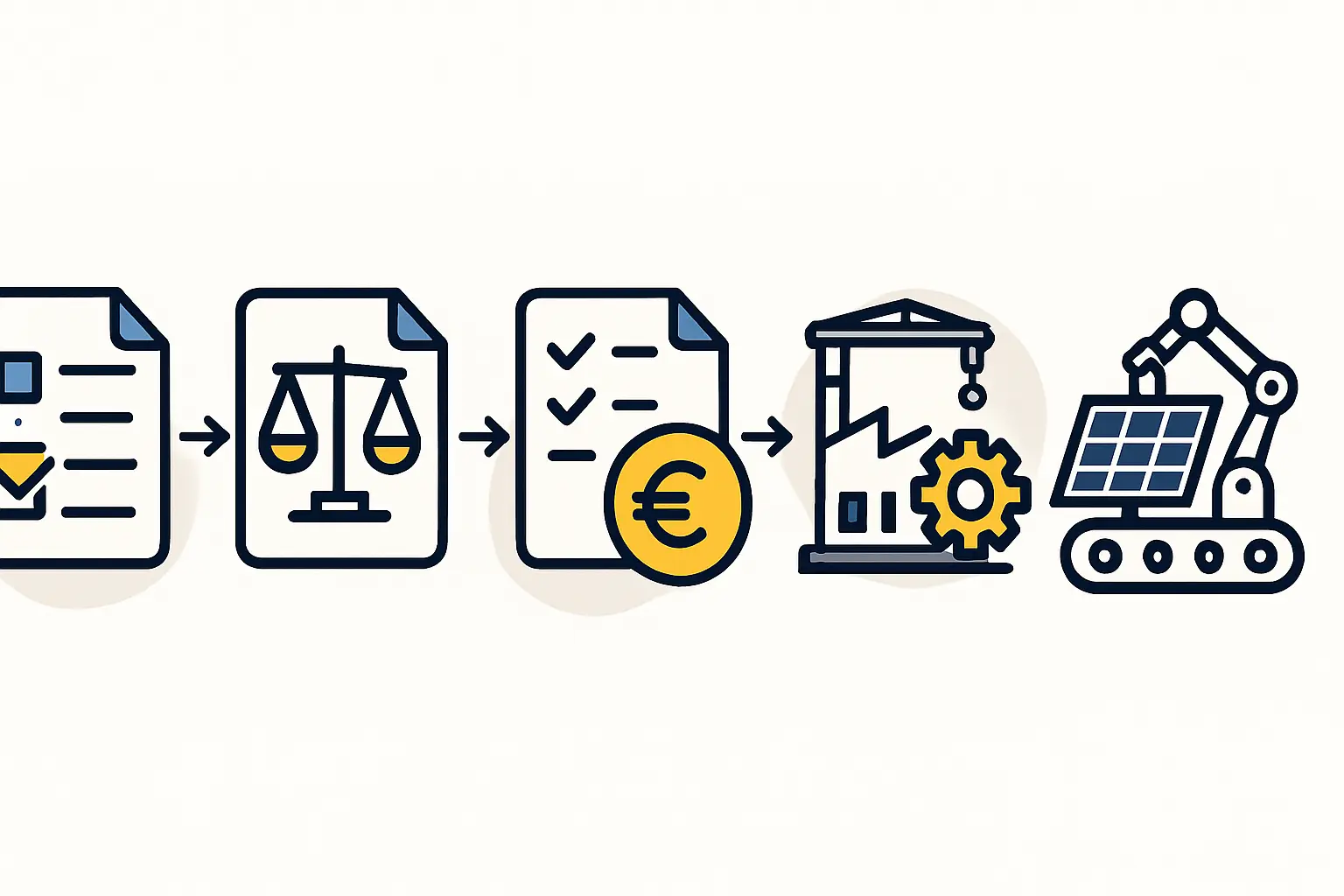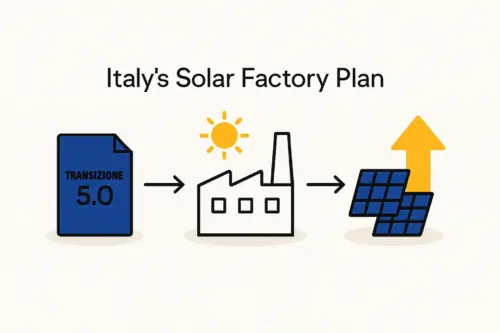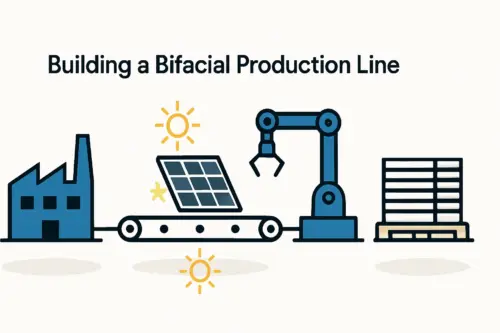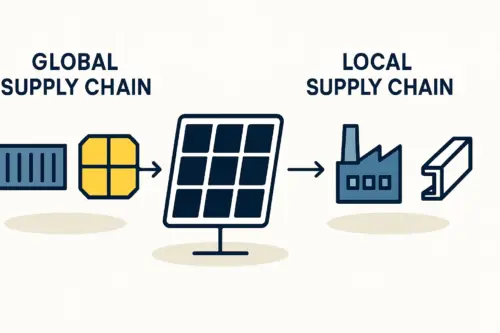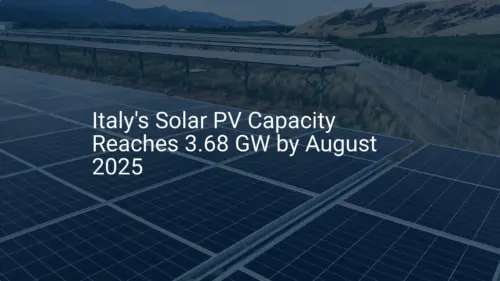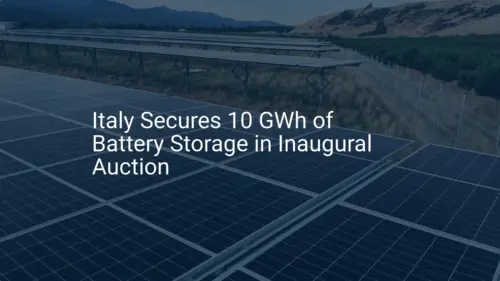An abandoned industrial complex, once a hub of economic activity, now often stands as a monument to a bygone era. Where many see urban decay, a strategic investor in the solar sector sees a significant opportunity. This is the core principle of brownfield redevelopment: transforming decommissioned industrial land into a modern, productive asset.
In Italy, a country with a rich industrial past and an ambitious renewable energy future, these sites offer a unique pathway for entrepreneurs to establish solar module manufacturing facilities. This approach, often supported by favorable regulations, aligns with national and European goals for industrial revitalization and energy independence. This article explores the strategic advantages, practical challenges, and key considerations for converting former industrial properties into state-of-the-art solar factories.
The Strategic Case for Brownfield Sites in Solar Manufacturing
A “brownfield” site is defined as previously developed land that is not currently in use and may have some level of environmental contamination. This stands in contrast to a “greenfield” site, which is undeveloped land, such as a field or forest. The opportunity in Italy is substantial; estimates suggest the country has between 80,000 and 600,000 contaminated or potentially contaminated sites, covering a vast area.
Choosing a brownfield site is akin to renovating a historic building rather than constructing a new one from the ground up. The foundational elements are already in place, offering a head start that can prove critical in a competitive market.
Key Advantages of Converting Industrial Heritage into Modern Production
Opting for a former industrial site offers several distinct advantages over developing on pristine land, spanning infrastructure, finance, and human resources.
Infrastructural Head Start
One of the most compelling reasons to choose a brownfield site is the pre-existing infrastructure. Many of these locations already have essential utilities and structures that are costly and time-consuming to develop from scratch. This includes:
- High-Voltage Power Grids: Essential for energy-intensive manufacturing processes.
- Road and Rail Access: Facilitates the transport of raw materials and finished products.
- Existing Buildings: While requiring retrofitting, the core structure can significantly reduce construction timelines.
This allows an investor to focus capital on specialized upgrades and production equipment. While the right building specifications for a solar module factory are critical, adapting an existing structure is often more efficient than building an entirely new one.
Regulatory and Financial Incentives
Governments increasingly see the value in bringing brownfield sites back into productive use. In Italy, this recognition is reflected in both national strategy and specific legislation. The Italian National Recovery and Resilience Plan (PNRR), for instance, has allocated €2.5 billion for initiatives that include the remediation of “orphan sites”—locations where the party responsible for pollution is unknown or unable to pay for cleanup.
Furthermore, recent “Energy Decrees” (such as DL 17/2022 and DL 181/2023) streamline the authorization process for renewable energy projects on industrial sites, including those that first require environmental remediation. This can create a clearer, more predictable path through the permitting process.
Skilled Labor and Community Support
Former industrial areas are often home to a workforce with a history of manufacturing and technical skills, providing a new factory with access to a pool of experienced labor. Establishing a manufacturing facility in such a region is also seen as a positive act of economic revitalization, potentially generating goodwill and support from local communities and governments. A skilled team for your solar module production is a cornerstone of success, and these regions can be an excellent source of qualified personnel.
Ready to make big Profits?
The solar Industry is Booming
WE HELP NEWCOMERS to the solar industry start their own solar module production line. Customers can make BIG PROFITS by selling modules and finding investors, without wasting money and time on things they don't need!
Navigating the Challenges of Brownfield Projects
While the advantages are significant, a brownfield project requires careful and thorough due diligence to manage its inherent complexities. A clear understanding of the potential hurdles is essential for any serious investor.
Environmental Due Diligence and Remediation
The primary challenge of a brownfield site is potential contamination. The Italian environmental cleanup process, governed by Legislative Decree 152/2006, is a structured but rigorous procedure. It typically involves:
- Characterization Plan: A detailed investigation to determine the nature and extent of contamination.
- Risk Analysis: Assessing the potential impact on human health and the environment.
- Operational Remediation Project (Progetto Operativo di Bonifica): A formal plan outlining the methods and timeline for cleanup.
This phase demands specialized engineering and environmental expertise and must be factored into the project timeline and budget from the very beginning.
Structural and Modernization Costs
An existing industrial building may not be immediately suitable for modern manufacturing. Legacy structures might require significant investment to meet today’s standards. Common retrofitting needs include:
- Roof Reinforcement: To support new HVAC systems or a higher snow load capacity.
- Floor Leveling and Reinforcement: To accommodate the weight and precision requirements of modern production lines.
- Upgrading Utilities: Ensuring electrical, water, and data systems can support advanced machinery.
These modernization costs must be weighed against the initial acquisition price. The specific layout and condition of the building must be compatible with the workflow of modern solar module manufacturing machines.
Bureaucratic Navigation
Even with streamlined regulations, a brownfield project involves navigating multiple government agencies at the municipal, regional, and national levels. Investors must verify the site’s official land use designation through an “Urban Destination Certificate” (CDU) to confirm it is zoned for industrial activity. Successfully navigating this landscape requires patience, expertise, and strong local partners.
A Practical Roadmap for Investors
A systematic approach can help manage the complexities and unlock the potential of a brownfield site.
Step 1: Site Identification and Preliminary Assessment
The search begins by identifying potential sites through regional development agencies, industrial real estate specialists, or government portals. A preliminary analysis should evaluate location, accessibility, and the general condition of existing infrastructure.
Step 2: Comprehensive Due Diligence
This is the most critical phase. It must include a technical assessment of the existing structures, a thorough environmental site assessment (Phase I and Phase II ESA), and a complete legal review of the property’s status and zoning.
Step 3: Financial Planning and Incentive Application
A detailed financial model should account for acquisition, remediation, renovation, equipment, and operational costs. Including a contingency of 15–30% for unforeseen site-specific issues is a prudent measure. Applications for PNRR funds or other relevant subsidies should be submitted as early as possible.
Step 4: Project Execution and Commissioning
This final phase involves executing the remediation plan, retrofitting the building, installing the production line, and hiring the workforce. With careful planning, this process can transform a dormant industrial site into a modern, productive solar factory.
Frequently Asked Questions (FAQ)
How long does the remediation process typically take?
The timeline varies significantly based on the type and extent of contamination. A simple case might take 6–12 months, while a complex site could require 2 years or more to complete the full regulatory and cleanup process.
Are brownfield sites always cheaper than greenfield sites?
The initial purchase price is often lower. However, when remediation and renovation costs are included, the total investment can be comparable to or even exceed that of a greenfield project. The primary advantages of brownfield sites are often the speed to market offered by existing infrastructure and the preferential regulatory pathways.
What is an “orphan site” and is it a good opportunity?
An orphan site is a contaminated property where the responsible party for the pollution cannot be identified or is bankrupt. Government funds, such as those from the PNRR, are often targeted at these sites. They can be a good opportunity, but usually involve navigating public tender processes and stricter government oversight.
Can a non-Italian entity lead a brownfield redevelopment project?
Yes, foreign investment is common. However, it is highly advisable for any non-Italian entity to partner with experienced local engineering, environmental, and legal consultants who have a deep understanding of the national and regional regulations, such as those detailed in Legislative Decree 152/2006.
Conclusion: A Strategic Path to European Solar Manufacturing
For entrepreneurs looking to enter the European solar manufacturing market, brownfield redevelopment in Italy offers a strategic and sustainable pathway. This approach turns an industrial legacy into a competitive advantage, leveraging existing infrastructure and regulatory support to accelerate project timelines.
This path is not without its challenges. It demands meticulous due diligence, expert navigation of environmental regulations, and a realistic budget for site modernization. However, for the well-prepared investor, transforming a dormant factory into a center for renewable energy technology is more than a sound business decision—it is a contribution to the region’s industrial and environmental future. Understanding these complexities is the first step toward making that investment a success.

